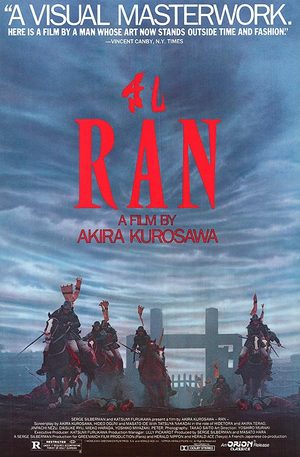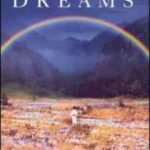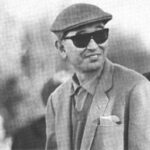I pride myself on having a vast knowledge of movies. While my fellow employees change the channel to see what’s on and they stumble across a movie they don’t recognize, I am usually able to name it even if I have never seen it before. Everyone is amazed at how I could know such things. Still, when it comes to older movies and the great directors, there are still many I need to catch up on. While I have been catching up on the work of Werner Herzog who directed Nicholas Cage to his best performance in years in “Bad Lieutenant: Port of Call New Orleans,” there are others like Goddard, Berman and Fellini who have made some classic movies I have still not bothered to see.
One of the directors I really have no excuse any longer to miss out on is Akira Kurosawa who is considered by many to be not just one of the best Japanese filmmakers ever, but one of the greatest of all time. Until I saw “Ran” the other night at the Nuart Theater in Los Angeles, the only movie of his I had previously watched was “The Seven Samurai” which really is one of greatest movies ever made. Of course, I got exposed to the American remake, “The Magnificent Seven,” first (which on its own is still really good). I may have had many chances to rent “Ran” from Netflix, especially with that special Criterion Collection edition floating around, but upon hearing that it was being shown in a new 35 mm print, even I couldn’t find an excuse to miss it.
“Ran” was the very last movie that Kurosawa made on such an epic scale, and amazing as it probably looked when it first came out, that is even more the case 25 years after its release. You look at this movie where Kurosawa had the power to request literally thousands of extras, and it is easy to see well dressed studio executives looking at him were he to have made the movie today and saying:
“Can’t you just add all these people in with CGI? Wouldn’t it be easier and cheaper just to hire like 50 guys instead of 1200?”
They would either say that or what they are typically quoted as saying:
“We’ll solve it in post!”
Looking at the title and some of the scenes from the movie trailer, I figured the title “Ran” meant the main characters were running from certain doom throughout like it was a big chase. This should show you what I know about the Japanese language (which is not a hell of a whole lot). “Ran” actually means ‘revolt’ or ‘chaos,’ and Kurosawa’s is filled with so much of that which is both physically and emotionally draining to witness.
The acclaimed director based the story on the legends of the daimyo Mōri Motonari and of how he had three sons that were intensely loyal to him. This led Kurosawa to look at the story a little differently:
“When I read that three arrows together are invincible, that’s not true. I started doubting, and that’s when I started thinking: the house was prosperous and the sons were courageous. What if this fascinating man had bad sons?”
Of course, anyone familiar with William Shakespeare can and will say that “Ran” is heavily influenced by the tragedy of King Lear. Indeed, the story very much resembles that of King Lear as we watch a powerful leader abdicate his throne, and who ends up being betrayed by his own blood.
The powerful leader at the center of “Ran” is Hidetora, leader of the Ichimonji clan. The story starts with Hidetora abdicating his throne to his three sons Taro, Jiro, and Saburo. The majority of the power is given to Taro who is his eldest son, and Jiro and Saburo are ordered by their father to support him no matter what. Saburo however does not agree with his decision to disperse of his powers to lead, reminding him that his kingdom came about through his own treachery and massacre of others. Hidetora starts acting all uppity like he’s a superstar celebrity who is not used to hearing the word no all that much, and he banishes Saburo from the clan as well as his servant Tango who speaks in Saburo’s defense. It’s amazing what breaking three arrows together can do to a man’s ego.
From there, it is an endless and vicious downfall for Hidetora as he is banished from his kingdom ever so coldly. Many characters in the film profess to believe in a god, be it Buddha or someone else, and they pray for their assistance in their little world that is quickly collapsing. If there is a god watching over the people however, he (or she) is blind to their sufferings or deaf to their endless prayers. Hence, this is quite a bleak movie from a thematic and visual point of view.
After seeing “Ran,” I was compelled to learn more about it so I looked it up on Wikipedia, a website I might be spending too much time on. It turns out that “King Lear” had never really entered Kurosawa’s mind until he was deep into pre-planning this movie. Along the way he did incorporate different elements of the play into it, and he had this to say about Shakespeare’s classic tragedy:
“What has always troubled me about ‘King Lear’ is that Shakespeare gives his characters no past. … In Ran, I have tried to give Lear a history.”
This is what gives the character of Hidetora among others such gravity throughout the nearly three hour running time of “Ran.” He was not a leader who earned his kingdom through some sort of family succession, but through the pillaging of villages and through murdering those who were against them. Perhaps he would like to forget this, but his power and family are forever stained by his deeds, and he gets reminded of this in one of the worst ways possible.
With that in mind, it’s no wonder that 2 of his 3 sons end up turning against Hidetora. What their father’s legacy has taught them is that you can’t get anywhere in life without beating the crap out of the other guy and stealing everything he and his followers have. Only Saburo is fearless and selfless in telling him that no matter what his father does from here on out, he will always be seen as a killer and that the power he has amassed is based on the murder of many. Saburo at least cares that much to tell him this instead of just sucking up to him like his brothers do as if he’s some Hollywood superstar everyone wants to take advantage of. Some people hear the word “yes” once too often when they need some others to tell him “no” once every other day.
As we see Hidetora losing his mind and in a state of disbelief over what he has been taken from him (that would be everything), I was reminded of Will Munny, the character Clint Eastwood played in “Unforgiven.” Both of them become sick, and their feverish state they become haunted by the lives they ended in their own coldly vicious ways. They have tried to convince themselves that they are not the same people they were once before, and Hidetora appears to develop amnesia in an effort to block his mind of the things he has done. But nightmares abound in his sleep reminding him of the price he has yet t pay. You could even compare this character to Anakin Skywalker who becomes the thing he fought against in “Star Wars Episode III: Revenge of the Sith.” In the process of trying to prevent the love of his life from dying, he gives up everything he believes in. Hidetora thinks that by passing the leadership duties to his oldest son that his clan will continue to prosper. The more we fear of something bad happening, the more likely we may allow it to happen.
This all makes me realize one of the most important elements in the Kurosawa movies I have seen; they are very dependent on the depth of their characters as much as they are on spectacle. Granted, this is only the second movie of his that I have seen, but it feels like just enough to understand why his cinematic works have made such a strong impression on filmmakers like Steven Spielberg and George Lucas (“The Hidden Fortress” is said to have a huge influence on “Star Wars”). Most movies today are just about spectacle, and the characters usually are a distant second to that, and they are usually just your stereotypical jackasses who try to stay out of trouble and yet are dumb enough to run right into it (of course then again, there might not be a movie otherwise). But its focus on character is what makes “Ran” so involving and gives the epic scope of it much more meaning for the viewer.
But let’s talk about the spectacle of “Ran” which is incredible to say the least. One of they key sequences in the film is the horrific massacre that takes place at the third castle where Hidetora takes refuge with his fathers. What really struck me was how Kurosawa put Tōru Takemitsu’s music score over the sounds of violence that are perpetrated by his sons as it gives what is being presented to us with far more meaning. Takemitsu’s music gives the sequence far more emotional power as it further illustrates the tragedy that is unraveling this once powerful clan, and which leaves Hidetora in a endless state of shock. Without the music, it would still be a cinematic high mark of capturing battle on celluloid, but it would not have the same effect without it.
The bloodbath of the massacre is made all the more vivid by Kurosawa in what was available to him. “Ran” was made long before the advent of CGI effects, so Kurosawa had access to literally thousands of extras. With this sequence, Kurosawa brilliantly captures the ugliness and viciousness of war, and of the cruel nature that dominates the humanity of the characters.
All the acting here is nothing short of excellent from as the entire cast invests each of the characters with various complexities which allow them to surprise us more than we might expect. The lead role in “Ran” belongs to Tatsuya Nakadai who plays the King Learish character of Hidetora. Behind all the heavy ghostlike makeup (which is directly influenced by Japanese Noh Theater), Tatsuya immerses himself completely into playing a man whose pride and own self-righteousness ends up to be his undoing. Without saying a word in the last half of the massacre, he communicates his utter regret of his thoughtless decision making which has led to the decimation of what he once had. Tatsuya makes Hidetora’s eventual descent into madness all the more vivid, and his performance never feels like it descends into camp or anything like that.
You also have to love Mieko Harada’s performance as Lady Kaede, Kurosawa’s version of Lady Macbeth. Through her deceitful ways, her viciousness and endless manipulation, she always seems to get her way and turn the men around her into quivering jelly. Her moments onscreen are some of my favorites as she exploits the fears of the men around her and seduces them despite the mistrust they have in her. Never let it be said that Akira Kurosawa writes weak roles for women because that certainly isn’t the case here. She wants to maintain her high status in the clan, and she is ruthless in how she pursues it.
You could say that they don’t make movies like “Ran” anymore but then again, this movie came out at a time (1985) when they weren’t being made anyway. I feel fortunate not just to have seen “Ran” at all, but to have had the opportunity to see it on the big screen where it belongs. For many, it serves as the culmination of all his talents and all he has accomplished in his career, and all the struggle and all the tears he shed while making this movie are there to be experienced by an ever widening audience. During the making of this movie, Kurosawa’s wife of passed away. By the time he got around to shooting the movie after working on the script for ten years, Kurosawa was almost completely blind. Regardless of his setbacks, nothing stopped him from making the movie as he had envisioned for so long.
Many years after its original release, “Ran” stands as one of the classic movies from one of the best directors ever. No one can or should doubt the heart and soul Kurosawa had put into it for years and years, and its 25th anniversary edition is a strong reminder of that.
**** out of ****
Source:
http://en.wikipedia.org/wiki/Ran_(film)




